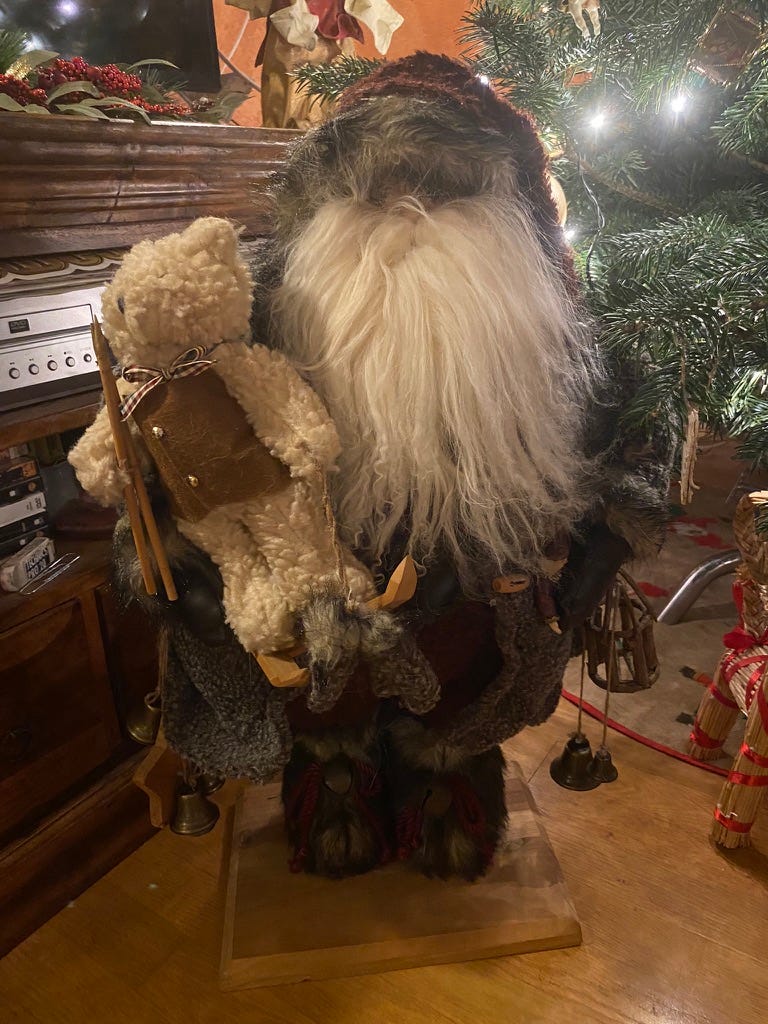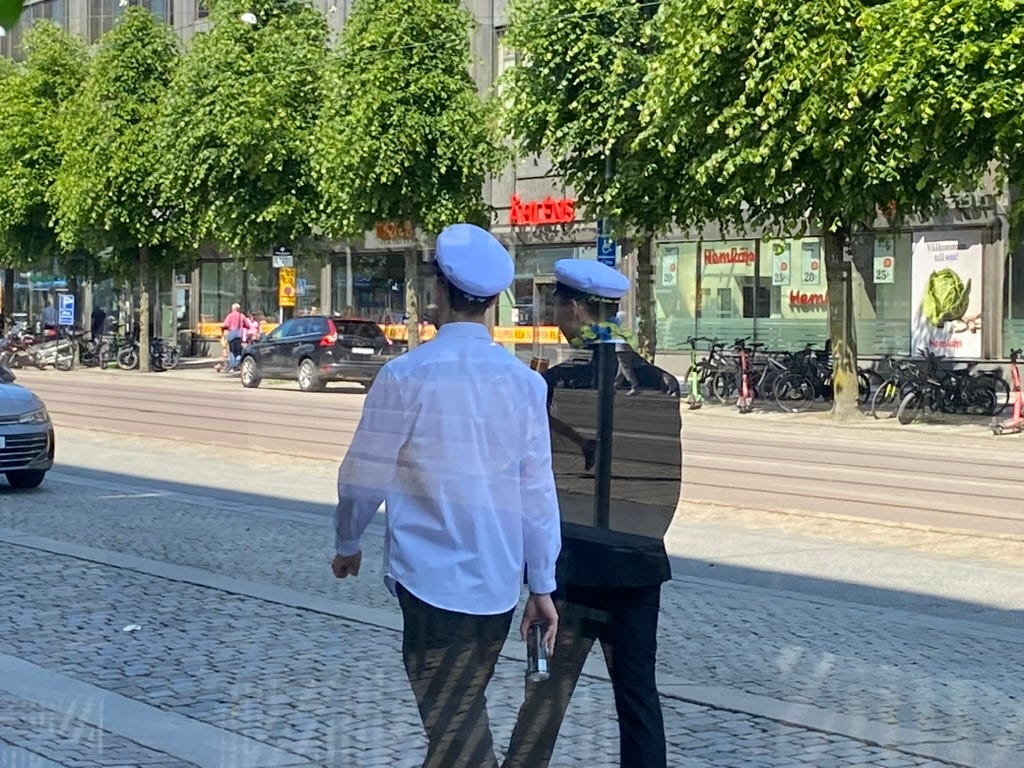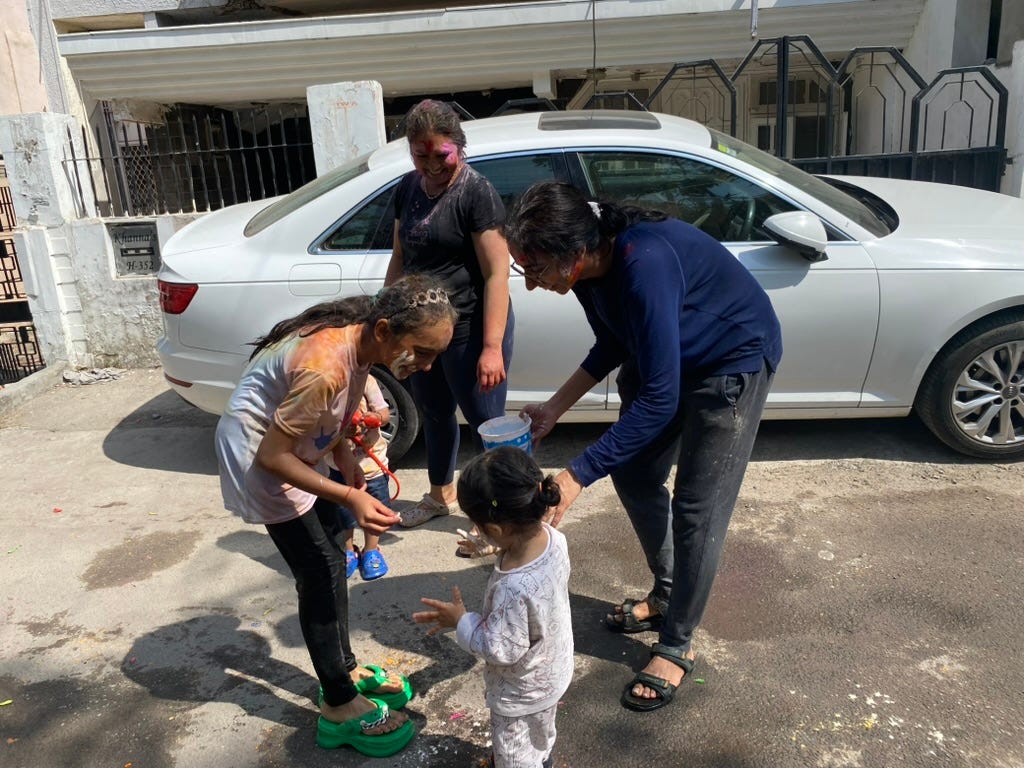Another article in the Media Series.
And second article in the series sub-series of Media and Mates (Media and Friendship).
You can read the first article here.
This post is a continuation from the last post titled Media and Mates1, which followed a reference from an earlier post titled, Pinked by Technology.2
The post mentioned a handwritten article as an in-class assignment, in twenty minutes. As promised the article will be shared. However, to provide some context, a few posts discuss ideas on friendship and human connections.
Sunset in Zadar, Croatia
Electronic Storytelling & Imagination
Imagination is infinite, they say.
But what happens when a story or a concept is frozen on the electronic media? And we have unending access to the same or similar content?
Popular stories, when presented on screen tend to freeze imagination.
An audio-visual rendering of collective myths robs us of spontaneity with which our parents and grandparents enacted them in the privacy of our homes. Though narrated for generations, each tale was told with a unique flavor, its own voice, and created distinctive memories. Written word crystalizes the story, and an audio-visual format constricts the ways we can visualize a story. For example, can we imagine Santa in a purple suit? Santa in red - is Coca-Cola’s gift to us. Even if the company denies it.
Thank God for Scandinavia where we can still see Santa in grey, white and green. That is because the concept of Santa --in Sweden emerges from the Swedish word Tomte, meaning gnome, which existed prior to any concept of Christmas. Gnomes or Tomtar are associated with cold and dark. By default, gnomes dress in dull green or grey that helps them blend into any Nordic Forest.
Santa holding a teddy bear. Took the picture at my neighbor’s house.
In Norway and Denmark, the word for Santa is Julnisse-literally meaning Christmas gnome. The word Jul does not quite Christmas either. It refers to celebrations during wintertime –referred to as Yule-tide, Yule-time. In Finnish the word Julpoukki-even though it looks like Santa--means Christmas Goat.
All these words point to a pagan origin of the grey and green figures that we see around Christmas time.
But none of that is reflected in the movies.
Movies have given us red and white Santas. The ones we recognize all over the world.
How about Disney princesses, many of whom have European origins. What comes to mind when you think of Snow White, Cinderella or Elsa?
If we read, instead of watching--a fairy tale—we imagine a different version of a princess’s dress, despite reading the same description.
On the screen however, we see not only a red dress, but also the shade of red, the print on the fabric, and Prince’s expression when he lays his eyes on her.
Camera movements guide our eyes.
Mediated Communication and Imagination
As human contact becomes increasingly mediated[1], media content will be our guide in understanding all things ‘human’.
Hardly recognizing that we are also narrowing the possibilities and options of thinking outside media experience. For decades now, we have looked towards TV characters to identify and define our experiences.
What Joey and Chandler said three decades ago still reverberates through reruns of Friends’ and in our collected vocabulary. “How’re you doing?” “We were on a break!”
We repeat the lines they give us and use them to justify our relationships forgetting many unpleasant aspects of the show. Would a guy be friends with sa person who kisses his mother passionately? As was the case with some characters in the show—F.r.i.e.n.d.s.
High school graduation called Studenten is a big event in Sweden. The graduating class wears sailor hats and makes some noise on the streets with their loud music and dancing!!
Friendship in Lingua-culture
All cultures share the same emotions, but each culture has a unique way of expressing them, even if they speak the same language. Hence a clear distinction between Spanish spoken in Spain vs. Latin America or English spoken in the USA, the UK, Canada, Australia or New Zealand.
How do you say, a really close friend in English?
Here are a few suggestions from a google search:
Dearest friend.
Confidant.
Soulmate.
Lifelong buddy.
Trusted ally.
Faithful friend.
Bosom buddy.
But none of them come close to saying the two-word phrase used all over north India and used often in Bollywood –Jigari-dost, borrowed from Persian.
When I heard it as a child, I thought it meant a friend close to one’s heart, since dost means friend. But imagine my surprise when I found out that the word Jigar means liver in Persian[2].
Liver.
Liver performs as much as 500 functions in our body and is equally responsible for proper working of our heart. Both physiologically and anatomically, the two organs are connected via blood circulation3. A weakened heart can affect liver and vice-versa[3].
What foresight!
How wise that the ancients called a friend close to the heart as the one who functions like your liver - a jigari-dost. A friend who performs the same function as liver does in our body, to detoxify blood, to raise hemoglobin and to make our heart happy and smiley.
Interestingly many countries that have had Persian influence use jigari-dost to address a dear and significant friend, including Uzbekistan. To call someone close to your jigar can be used both in platonic and amorous relationships[4]. Interestingly, to say that someone has a jigar implies strength and courage.
So, if you have a jigara, you are strong of both body and mind.
After all a strong liver does make a strong body.
Another friendship-defining phrase in Hindi, the most widely spoken language in India is ‘langotia yaar.’
Langot, meaning a cloth-diaper
Yaar, meaning a friend, a close one.
Bosom-buddy is probably the closest to Langotia-yaar in meaning, since the phrase is used to address someone, you have known since infancy and implies familiarity and comfort. Many cultures use a qualifier to denote the depth of familiarity in friendship. Often, there is a clear distinction between a friend and an acquaintance.
The word kompis in Swedish imply a close friendship and can be equated with English word buddy. While vän in Swedish means a long-standing friend. Kompis is someone you hang out with. But a vän is a confidant.
Friendship in the Media & a Haque
Sadly, movies on friendship have always been rare. Correct me if I am wrong, but I assume that video games/interactive story telling does not focus on the concept of friendship either. Most movies throw a story about friendship in between the layers of a larger story. And definitely there are more stories about friendships between men, than those between women. Another example of media’s restrictive ways of story-telling.
Holi, festival of color in Delhi. Get a close up, enlarge the picture to see faces covered in color.
Women are usually shown as competing rather than complementary companions to each other. The rarest of all are friendships are shown between men and women, or between different age groups.
Haque, is a Persian/Arabic word meaning ‘right to’. While it can be used to imply any kind of ‘right’, in human relationships it is used to exert a loving imposition.
I have the haque to get angry with you, I have the haque to your time.
That is one thing I have missed outside of India.
Took me a long time to realize and name it.
You were not supposed to expect anyone for their time, no matter how much time you had spent together.
You could not expect an explanation either, coz, ‘I just feel this way.’
Today all pop-psychologists will tell you, ‘Cut off all ties if it is toxic. Cut out all negative people from your life?”
A family playing the festival of color in Delhi. Basically, creating memories!
That leaves little room for allowing people a cocoon, or a resting place. Nor does that allow anyone an opportunity to be heard.
And since there are very few examples of real friendships in the media, we have lost the understanding of how nurturing and mutually beneficial this thing call friendship can be.
Though there are exceptions, friendships are always between equals. If not age, then intellect. If not intellect, then a mutual desire to listen.
That is why shows like Friends though cute are unrealistic. Someone like Ross, an intellectual will hardly be close friends with Joey. To compensate, they made Joey cool and Ross dull. Joey popular with the ladies, and Ross a three-time divorcee.
Equality in friendships comes at different levels. But one thing remains common, a genuine concern for the other, a deep interest in the life of the other and of course, long conversation where one tends to forget time.
At some point, in good friendships, it begins to feel like we are speaking aloud to ourselves.
We are not being vulnerable for there is no other.
Let me stop here with sharing an article on intergenerational friendship4. Click here. And another article on connection between happiness and friendship5 (click here)
In the next post we will discuss the impact of breakdown of communities on friendships.
[1] Mediated communication implies an interaction via technology, i.e. phones, emails, video calls and chats, which give us an idea of immediacy but is not the same as F-2-F, face to face, in person communication. Hand written letters were no different, except they did not happen in real time, required writing by hand, unless they were type-written and had a time-lapse. Prof. Steven Jones, in one of his earlier books ‘Cyber-Society’ argued that rather than being a connector, email (electronic communication of the 1990s) was a response to our disconnectedness. Increase in the research and use of mediated communication was response to our disconnectedness rather than a supposed to fill in the gaps of distance, not actually become he https://www.theatlantic.com/family/archive/2023/11/friendship-different-generations-ages/676105/#:~:text=Younger%20pals%20can%20be%20a,Don't%20miss%20what%20matters. mode of communication)
[2] Jigar means liver in several languages, including Urdu, Uzbek, and Arabic.
[3] https://academic.oup.com/eurheartj/article/34/36/2804/612871
[4] Here is a popular song from the 1990s that uses the word jigar in a romantic sense, ‘nazar ke samne, jigar ke paas—before my eyes and close (to my jigar), there is someone, that someone is you.’
Pinked by Technology
‘The Internet is the most widespread and rapidly adopted technology in the history of humanity.’
https://academic.oup.com/eurheartj/article/34/36/2804/612871










